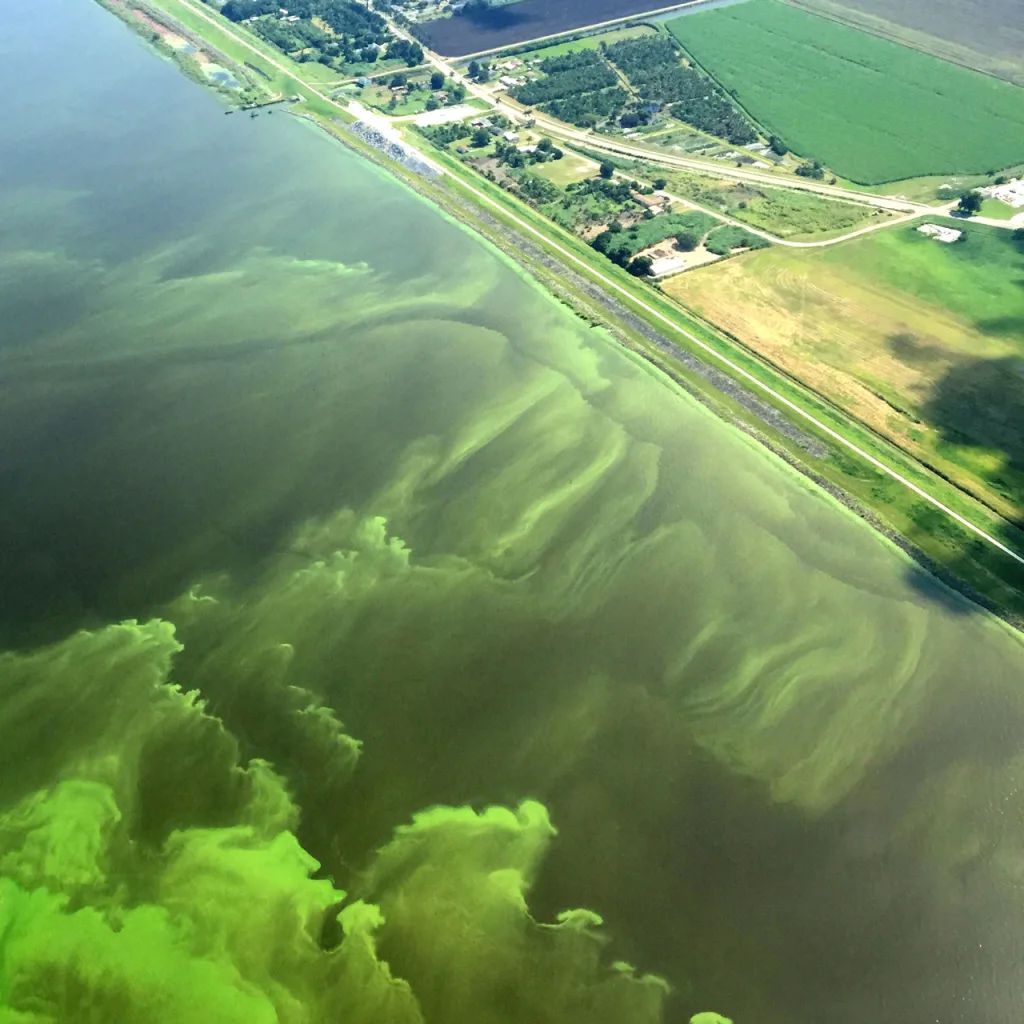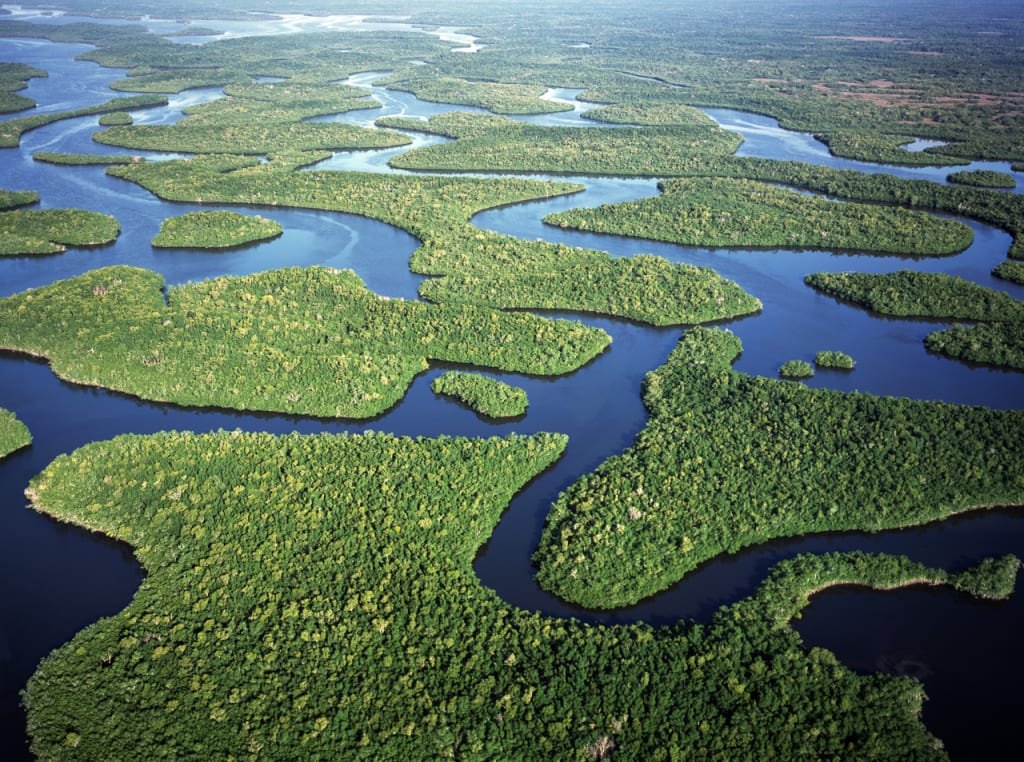Do you know where your drinking water comes from?
In South Florida, drinking water comes from the Everglades, a vast landscape of wetlands that has long filtered the water relied on by millions of people.
But as the Everglades has shrunk over the past century, the region’s water supply and water quality have become increasingly threatened, including by harmful algal blooms fueled by agriculture runoff. Now, the water supply faces another rising challenge: saltwater intrusion.
Protecting South Florida’s water hinges on restoring the Everglades. That’s why, 25 years ago, the federal government and universities launched the world’s largest ecosystem restoration effort ever attempted.
I’m involved in this work as an ecosystem ecologist. The risks I see suggest continuing to restore the Everglades is more crucial today than ever.
What happened to the Everglades?
The Florida Everglades is a broad mosaic of freshwater, sawgrass marshes, cypress domes and tree islands, mangrove forests, and seagrass meadows all connected by water.
But it is half its original size. In the early 1900s, the U.S. Army Corps of Engineers began installing canals and levees to control flooding in the Everglades, which allowed people to build farms and communities along its edges. The Tamiami Trail became the first road across the Everglades in 1928. It connected Tampa to Miami, but the road and canals cut off or diverted some of the natural water flow in South Florida.
Since then, Florida’s economy, agriculture, and population have exploded—and with them has come a nutrient pollution problem in the Everglades.
The major crop, sugarcane, is grown in a region south of Lake Okeechobee covering 1,100 square miles that’s known as the Everglades Agricultural Area. Nearly 80 tons of phosphorus fertilizer from federally subsidized farm fields runs off into the Everglades wetlands each year. And that has become a water quality concern. Drinking water with elevated nitrogen is linked to human health problems, and elevated phosphorus and associated algal blooms can cause microbes to accumulate toxins such as mercury.
Healthy wetlands can filter out those nutrients and other pollutants, cleaning the water.

Rain falling in the Everglades percolates through the porous limestone and recharges the Biscayne Aquifer, which supplies drinking water for 1 in 3 Floridians.
But wetlands need time and space to function properly, and the damage from farm pollution has harmed that natural filtering system.
By the 1990s, Everglades wetlands and the wildlife they support hit a critical stress level from elevated concentrations of phosphorus, a nutrient in fertilizer that washes off farm fields and fuels the growth of toxic algal blooms and invasive species that can choke out native plant populations.
The changes led to seagrass die-offs and widespread invasion of sawgrass marshes by cattail and harmful algal blooms. Degraded wetlands can themselves become pollution sources that can contaminate surface water and groundwater quality by decreasing oxygen in the water, which can harm aquatic life, and releasing chemicals and nutrients as they decay.
A vast restoration campaign
Congress approved the Comprehensive Everglades Restoration Plan in 2000 to support reducing phosphorus concentrations by re-creating large wetlands areas to remove excess nutrients and reestablishing more of the natural water depth to bolster native populations.
That restoration effort is making progress in reconnecting wetlands to natural water flows by rehydrating large areas that were cut off. Phosphorus levels are lower in many wetlands that now remain hydrated longer, and in these wetlands freshwater is recharging the aquifer, helping sustain the drinking water supply.
However, delays in critically important components of that work have left some wetlands in degraded conditions for longer than expected, especially in regions near and downstream of the Everglades Agricultural Area, where phosphorus concentrations remain stubbornly high.

South Florida continues to experience harmful algal blooms from phosphorus reaching rivers and the coast, resulting in fish kills and the deaths of manatees. Red tide can shut down fishing and keep beach-going tourists away, harming local economies. This pollution is estimated to have cost Florida’s economy US$2.7 billion in 2018.
The unexpected risk: Saltwater
An unforeseen threat has also started to creep into the Everglades: saltwater.
As sea level rises, saltwater reaches further inland, both in rivers and underground through the porous limestone beneath South Florida. Saltwater intrusion also occurs when wells draw down aquifers to provide water for drinking or irrigation. That saltwater is causing parts of the Everglades marshes, often referred to as a river of grass, to collapse into open water.
The loss of these freshwater marshes reduces the capacity of the Everglades to remove phosphorus from the water. And that means more nutrients flowing downstream, contaminating aquifers and causing harmful algal blooms to form in coastal waters.

Scientists have learned that marsh plants need freshwater pulses during the wet season, from April to November, to avoid saltwater intrusion.
For example, saltwater intruded about one mile inland between 2009 and 2019 in parts of the Fort Lauderdale area. More freshwater is needed to push the saltwater back out to sea.
However, the restoration effort was never intended to combat saltwater intrusion.
Reasons for optimism
Despite the continuing challenges, I am optimistic because of how scientists, policymakers and communities are working together to protect the Everglades and drinking water.
I lead part of that restoration work through the Florida Coastal Everglades Long Term Ecological Research program. The effort started at Florida International University on May 1, 2000, the same year the Everglades restoration plan was authorized by Congress.
Our research was used to set the levels of nutrients allowable to still protect the region’s water supplies, and we have been working for 25 years to reduce saltwater intrusion and phosphorus pollution to ensure drinking water for South Florida remains both fresh and clean. We continually use our research to inform water managers and policymakers of the best practices to reduce saltwater intrusion and pollution.
As saltwater intrusion continues to threaten South Florida’s freshwater aquifer, Everglades restoration and protection will be increasingly important.
Everyone in the region can help.
By rehabilitating degraded wetlands, allowing for more freshwater to flow throughout the Everglades ecosystems, reducing the use of freshwater on lawns and crops, and reusing municipal water for outdoor needs, South Florida can keep its drinking water safe for generations of future residents and visitors. This is something that everyone can contribute to.
Marjory Stoneman Douglas, Miami’s renowned conservationist who helped establish the Everglades National Park, often said, “The Everglades is a test. If we pass it, we may get to keep the planet.”
John Kominoski is a professor of biological xciences at Florida International University.
This article is republished from The Conversation under a Creative Commons license. Read the original article.


